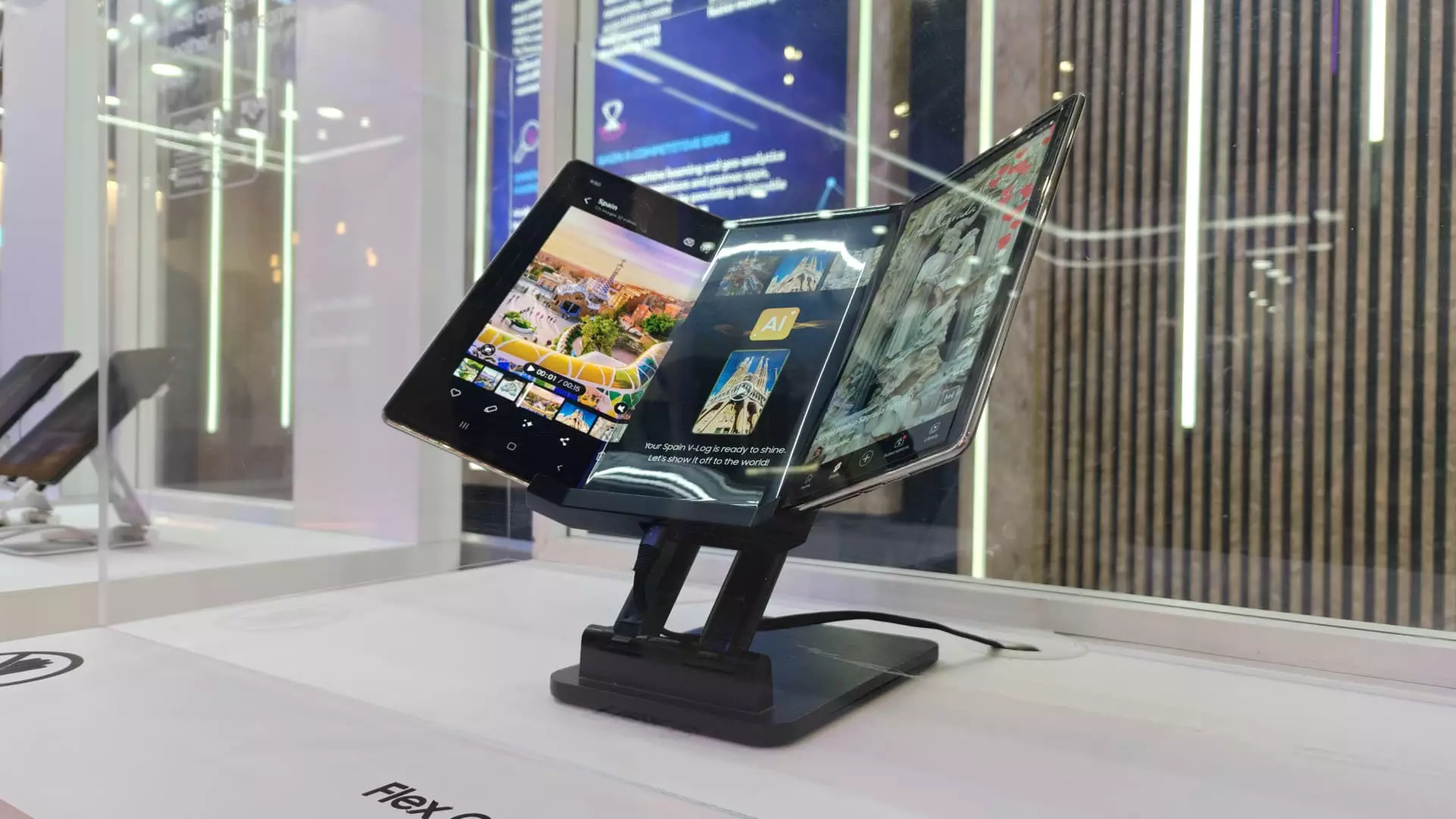As we observe the latest advancements in smartphone technology, it becomes increasingly clear that manufacturers are no longer content with the status quo. Historically, the smartphone market has been dominated by the traditional bar-shaped design established by Apple with its inaugural iPhone. Fast forward to today, and we are witnessing a substantial shift toward innovative multi-screen devices. The arrival of offerings like Huawei’s Mate XT and Samsung’s provocative trifold concepts—Flex G and Flex S—highlights a burgeoning trend that aims to break free from the “sea of sameness” that has stunted creativity in this industry for years.
Huawei’s Mate XT, with its staggering price tag of €3,499, exemplifies the current enthusiasm for high-end, feature-rich devices. It’s a signal that consumers are being asked to invest in technology that adds real value to their daily lives, regardless of the cost. Samsung’s Flex G and Flex S models, while still in conceptual stages, push the envelope further by expanding the notion of usability. The Flex G, with its ability to fold in both directions like a book, and the S, which features a zigzag design, show that innovation is not simply about adding more screens, but rather rethinking how we interact with our devices.
The Emotional Appeal of Unique Designs
In a world where functionality often reigns supreme, companies like Nothing are emerging with an understanding that consumers crave emotional connections with their devices. The launch of their budget-friendly Phone (3a) with an eye-catching LED light system illustrates a broader transition towards brand differentiation based on aesthetic and emotional value rather than just performance. As co-founder Akis Evangelidis points out, consumers are increasingly seeking products that offer more than mere utility—they are looking to find brands that resonate with their aspirations and personal identity.
By embracing this dynamic, Nothing is cleverly positioning itself to engage consumers in emerging markets like India, where the smartphone landscape is rapidly evolving. Their efforts underscore the notion that today’s tech-savvy users desire personal connections through innovative design, pushing smartphone manufacturers to break free from the conventional molds. This emotional appeal can undoubtedly ignite consumer interest, as the demand for something fun and distinctive begins to trump traditional sensibilities.
The Challenges of Foldable Technology
Despite the promising emergence of folding smartphones, the reality is that they remain a niche category within the broader smartphone market. Although impressive growth—6.4% year-over-year to 19.3 million units—has been reported, foldable devices represent a mere 1.6% of total global shipments, as documented by IDC. It’s important not to overlook the practical barriers that still hinder the category’s wider acceptance.
Consumers already face challenges when transitioning to foldable devices, which are generally bulkier and carry significantly higher price tags compared to their non-folding counterparts. The average selling price of a folding phone hovers around $1,218, nearly three times more than standard smartphones, with a restart in consumer spending power influencing the trajectory of foldables. For manufacturers like Samsung and Huawei, the challenge lies not just in innovation, but also in convincing skeptical consumers that premium pricing is justifiable for a more sophisticated experience.
Innovation Amidst Market Saturation
Despite the stagnation covering the market, particularly noted in traditional smartphone designs, the innovations showcased at trade shows like MWC offer a glimmer of hope. Samsung’s leading position in the foldable segment, commanding a 32.9% market share, reflects its commitment to continuous improvement in user experience and device quality. Chinese rival Huawei follows closely behind, but both companies are acutely aware that innovation must keep pace with the expectations of modern consumers.
New entrants like Tecno, who unveiled their own trifold device, the Phantom Ultimate 2, serve as reminders that competition fuels creativity. By introducing alternatives that cater to varied consumer needs, these companies force established brands to respond or face obsolescence. It’s a reality that fosters innovation as well as an understanding of the critical need to balance quality with affordability.
While the smartphone market confronts a turning point characterized by innovation, emotional engagement, and practical barriers, the landscape is undeniably transforming. As companies strive to reimagine the future of mobile technology, it will be fascinating to see whether consumers are ready to embrace these changes, particularly in terms of accepting higher costs and novel designs. The road ahead may be filled with obstacles, but the common goal remains a tantalizing prospect of reshaping our interactions with technology.

